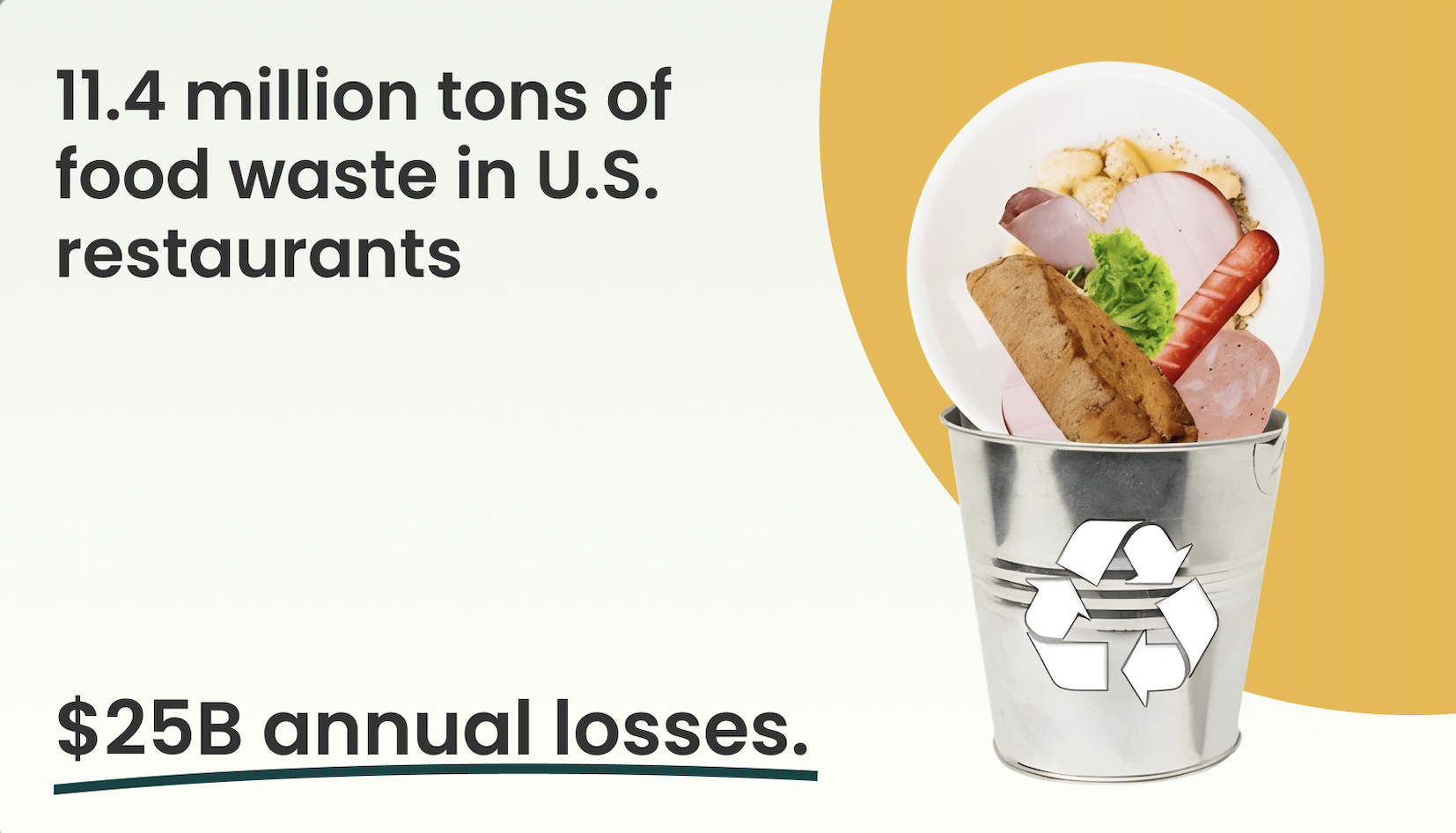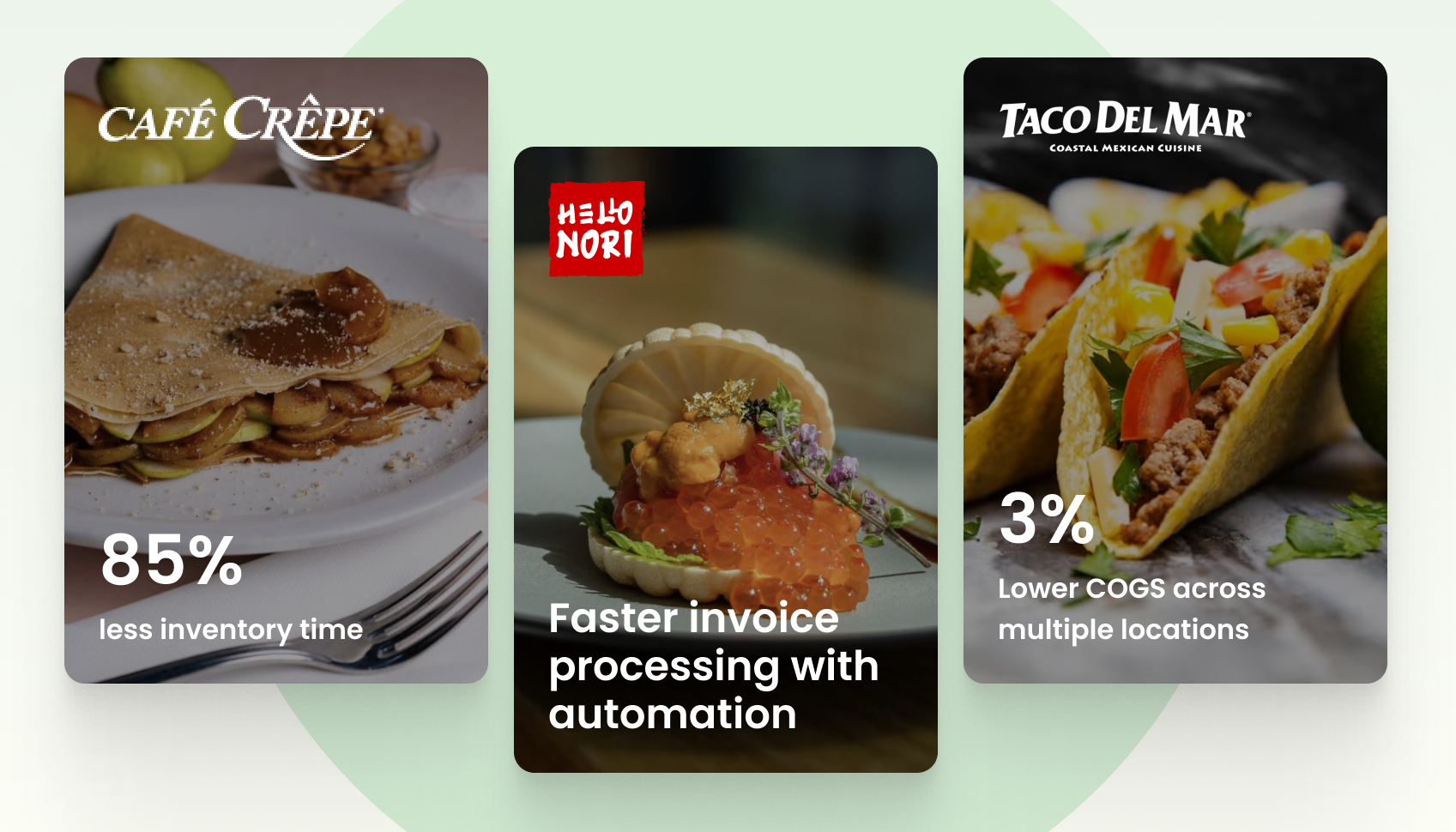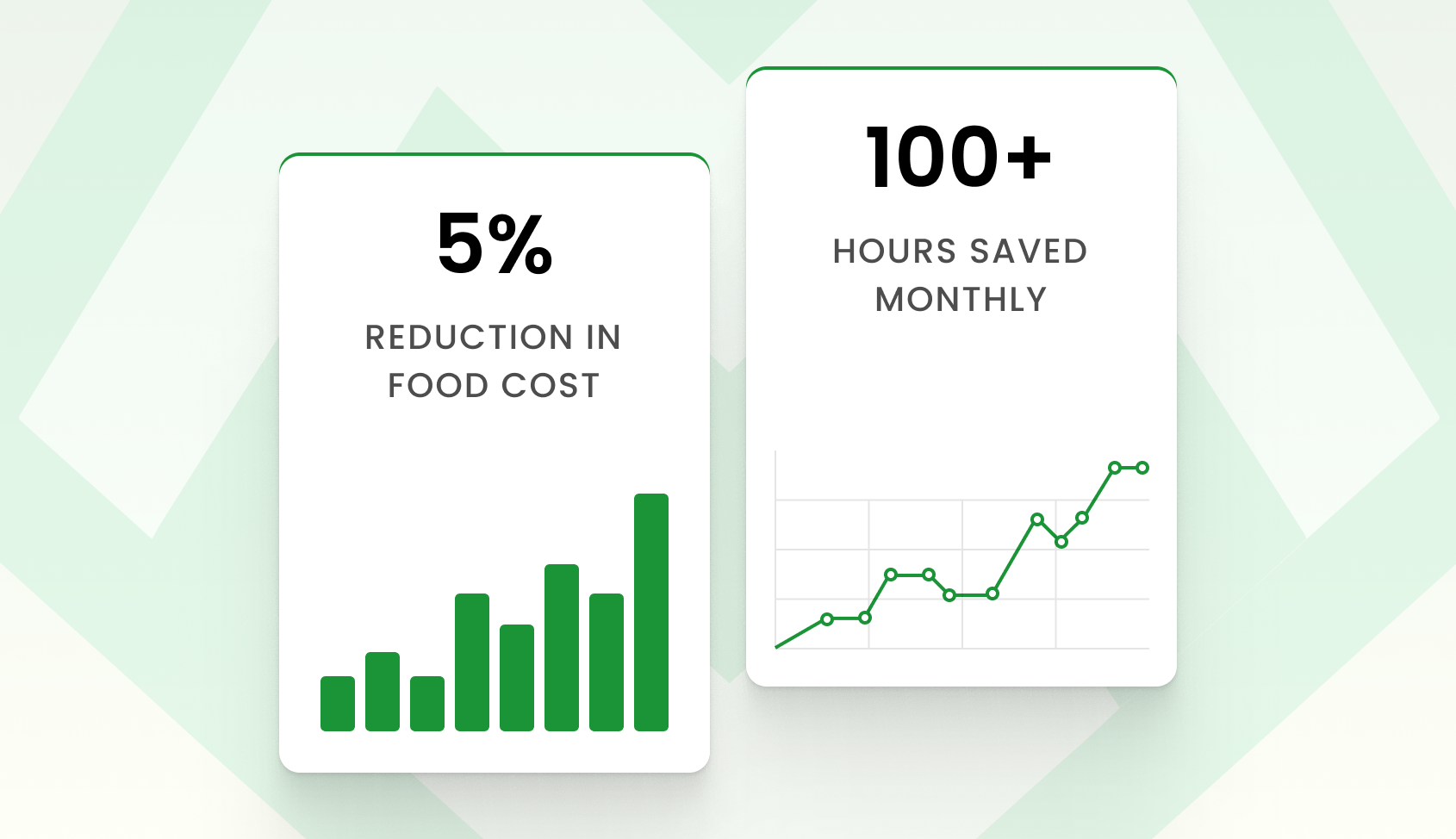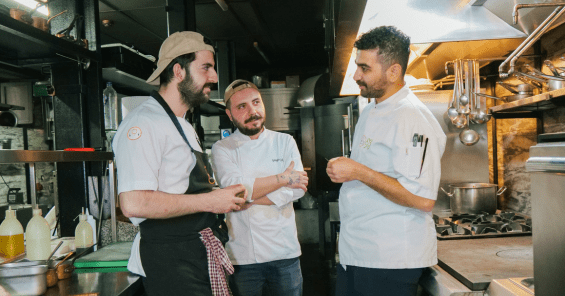

6 Proven Strategies for Restaurants to Control Food Costs in 2025
Discover proven food cost control strategies for restaurants. Learn how MarketMan’s AI-powered inventory, ordering, and menu tools help operators reduce waste, cut costs, and boost profitability.
The Reality of Food Costs in Restaurants
Food costs are one of the most unpredictable variables in running a restaurant. A few small missteps, like ordering too much produce before a slow week, prepping more protein than you can sell, or plating portions that are just a little too generous can add up to significant losses. What might look like minor errors in the moment can snowball into thousands of dollars in wasted product over the course of a year.
Food waste isn’t just a nuisance, it’s a serious food cost control challenge. According to ReFED, U.S. restaurants generate 11.4 million tons of food waste each year, which adds up to $25 billion in losses annually. On a global scale, the Food and Agriculture Organization of the United Nations (FAO) estimates that one-third of all food produced goes uneaten.
For operators working with razor-thin margins, food waste has a direct impact on profitability. But it also affects staff morale, guest perception, and sustainability efforts.
The good news? Food waste in restaurants can be minimized. By combining practical strategies with modern restaurant food cost solutions, operators can cut waste, reduce costs, and build more sustainable businesses. And with MarketMan, trusted by over 15,000+ restaurants worldwide, these solutions are easier to implement than ever.

Proof First: Real Restaurants, Real Results
MarketMan is more than software. It’s a platform proven to deliver measurable results:
- Cafe Crepe: 85% reduction in inventory time.
- Taco Del Mar: 3% lower COGS.
- Bakery Lorraine: Decreased COGS from about 30% before using MarketMan.
- ATFC Ltd.: 80% less time on inventory.
- Ashley Mac’s: 60% reduction in counting time.
These stories highlight what operators gain with MarketMan: clarity, consistency, and control.

The True Cost of Poor Food Cost Control
Food waste affects more than the trash bins. Its costs ripple through every part of a restaurant:
Financial costs
Industry studies show that 4–10% of food purchased by restaurants never reaches a customer’s plate. This leakage highlights the importance of strong food cost control practices. For a restaurant spending $40,000 a month on food, that could mean $1,600–$4,000 wasted monthly. For multi-unit groups, the losses multiply quickly.
Operational inefficiencies
Waste throws off inventory counts, causes reordering headaches, and forces staff to spend hours reconciling discrepancies. Managers often feel like they’re constantly reacting instead of planning.
Reputation and sustainability
Guests increasingly care about sustainability. According to the National Restaurant Association, younger diners, in particular, are drawn to restaurants that reduce waste and operate responsibly. Waste doesn’t just hurt margins; it can also hurt brand perception.
Environmental impact
The FAO reports that if global food waste were a country, it would be the third-largest emitter of greenhouse gases after the U.S. and China. Reducing waste helps restaurants contribute to broader climate goals while strengthening their businesses.
Why Food Costs Spiral Out of Control
When operators take a closer look, the causes of food waste are clear:
- Over-ordering: Managers buy more than needed to avoid running out.
- Forecasting errors: Seasonal swings or unexpected events throw demand off.
- Inconsistent portions: Different cooks plate different amounts, driving up costs and guest inconsistency.
- Storage and spoilage issues: Without FIFO (First In, First Out), older stock spoils behind newer deliveries.
- Training gaps: New staff over-prep or make mistakes without realizing the cost.
- Low-selling menu items: Specialty ingredients for slow-moving dishes spoil before they’re used.
These challenges are universal, but they’re also solvable. With the right food cost control systems, operators can turn these problems into measurable savings.
6 Proven Food Cost Control Solutions
Every operator faces food waste challenges, but the right systems make them manageable. Here are six approaches that consistently deliver results, along with how MarketMan makes them easier to put into practice.

1. Get Control of Inventory
If you’re still using spreadsheets or clipboards, it’s no surprise that items slip through the cracks. One week you’re out of onions mid-service, the next you’re tossing spoiled mushrooms.
With MarketMan’s inventory management software, inventory stops being a chore. A quick count on the mobile app gives you real-time accuracy, and AI-powered ordering forecasts demand. Because MarketMan connects directly with your POS, you can finally trust that sales and usage match up.
The result? Fewer surprises, less spoilage, and more confidence when you place your next order.
2. Keep Portions Consistent
In a busy kitchen, it’s the little things that add up: a few extra slices of pepperoni on a pizza, a heavy ladle of soup, or an oversized scoop of mashed potatoes. Those small over-pours quietly inflate food costs across hundreds of plates a day. MarketMan standardizes recipes so every portion is measured, costed, and repeatable, no matter who’s working the line. Recipes automatically update when supplier prices change, helping chefs maintain precision, protect margins, and keep every plate consistent from prep to pass.
MarketMan helps standardize recipes so every plate comes out the same, no matter who’s on the line. Portions are tied to real costs, and recipes update automatically when supplier prices change. That way, you’re protecting both guest experience and your margins.
Learn more about recipe costing and menu profitability.
3. Order Smarter, Negotiate Better
Many operators over-order “just in case,” leading to waste and inflated food costs. At the same time, supplier price increases often slip through unnoticed until it’s too late. MarketMan helps you stay one step ahead by combining real-time ingredient price tracking with AI invoice scanning that flags changes right after delivery. Smart ordering tools then suggest ideal quantities based on sales patterns and inventory levels. Over time, you can monitor vendor performance to identify your most reliable, cost-effective partners.
The result: less waste, stronger vendor relationships, and more predictable margins.
4. Make Waste a Team Effort
A new prep cook might dice twice as many tomatoes as needed, or a misfire at the pass ends up in the trash. Without tracking, no one learns from those mistakes.
MarketMan makes waste visible in a way that feels constructive, not disciplinary. Staff can log what’s discarded and why, and managers can see the patterns in reports. Dashboards make it clear what waste costs in real dollars, helping teams feel ownership in fixing it.
When waste reduction becomes everyone’s responsibility, the positive results add up quickly.
5. Design Menus That Work Harder
Some dishes sell every night. Others sit on the menu, dragging down profits and wasting ingredients.
With MarketMan, you don’t have to guess which is which. Menu engineering reports highlight which dishes drive profit and which ones generate waste. Ingredient-level insights help you make smarter decisions about what to feature and what to retire.
The outcome is a leaner menu that makes the most of every ingredient and has fewer products spoiling in the walk-in.
6. Put AI and Automation to Work
Waste often shows up after it’s too late to prevent it. A better approach is staying ahead of the problem.
MarketMan uses AI ordering to anticipate demand so you buy the right amount at the right time. Alerts prevent overstocking or running out, and AI invoice scanning saves more than 100 hours of bookkeeping every month.
Instead of reacting to yesterday’s mistakes, you’re proactively steering tomorrow’s operations. This shift is at the heart of smarter food cost control.
ROI Snapshot: The Bigger Picture
MarketMan customers consistently report:
- 5% reduction in food costs and more than 100 hours saved monthly in bookkeeping and admin tasks.
These results aren’t abstract; they’re measurable outcomes and proof that effective food cost control directly impacts the bottom line.

A Future With Better Food Cost Control
Imagine a restaurant where waste is predictable and manageable, not a daily headache. Inventory is accurate. Portions are consistent. Vendors are partners, not stress points. Staff feel empowered, guests notice quality, and costs are under control.
That’s what smarter restaurant food cost control delivers. And it’s the future MarketMan is helping operators create every day.
Smarter Foodservice Decisions, Powered by Trust
Reducing food waste is about more than sustainability. It’s about protecting margins, building resilient operations, and leading with responsibility.
MarketMan isn’t just another software tool. It’s a trusted partner that gives operators:
- Clarity: Real-time visibility into inventory and waste
- Control: Automation and AI tools to simplify complexity
- Confidence: A solution trusted by more than 15,000 restaurants worldwide
Ready to see it for yourself? Book a demo today and discover how smarter restaurant food cost control can help your restaurant business save money, reduce waste, and grow with confidence.
FAQ: Food Cost Control in Restaurants
How do restaurants reduce food waste?
Restaurants reduce food waste through better inventory management, portion control, menu engineering, supplier negotiations, and staff training. Tools like MarketMan streamline these processes with AI-driven ordering, waste logging, and recipe costing.
What is the biggest cause of food waste in restaurants?
The main causes are over-ordering, forecasting errors, portion inconsistencies, and poor storage practices. MarketMan helps solve these by providing real-time data and AI ordering.
How much money can a restaurant save by reducing food waste?
Industry averages suggest restaurants can save 2–6% of food costs by addressing waste. MarketMan customers report a 5% reduction in food costs.
Author
Contributors
Si vous avez des questions ou si vous avez besoin d'aide, n'hésitez pas à nous contacter.
Ne manquez pas de maximiser les profits de votre restaurant ! Calculez votre ROI avec MarketMan
Join over 18,000 restaurants and get the hottest restaurant tips delivered to your inbox
You may also be interested in
Prêt à commencer ?
Parlez à un expert en restauration dès aujourd'hui et découvrez comment MarketMan peut aider votre entreprise.







